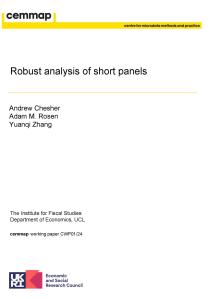Much has been made about the mini Budget’s surviving high-profile tax cuts: the reductions in National Insurance contributions (NICs) and the 1p cut to the basic rate of income tax. Even without the additional-rate abolition, these are very big tax cuts relative to plans, and are likely to be enough to put considerable strain on the public finances. But they come in the midst of a four-year freeze to income tax thresholds. Many other tax and benefit thresholds and values are also frozen indefinitely.
By 2025–26 these freezes take away £2 for every £1 given to households through the headline personal tax cuts. Not only is this true overall, but households in every part of the income distribution will, on average, lose more from freezes over the next three years than they will gain from the headline cuts.
These are among the findings from new research from the Institute for Fiscal Studies, available today as a pre-released chapter of the 2022 IFS Green Budget (produced in association with Citi and with funding from the Nuffield Foundation).
Most thresholds, allowances and benefit amounts are usually uprated in line with inflation, or sometimes earnings, so they maintain their real value over time. But freezing them can stealthily and unpredictably change the size and shape of the tax–benefit system. This is especially true when inflation is high. For example, in the income tax system:
- As a result of the four-year freeze to the personal allowance, by 2025–26 the number of income tax payers will rise to 35.4 million (66% of adults) – 1.4 million more than the number today (34.0 million, 63% of adults). By 2025–26 the freeze will be costing basic-rate taxpayers £500 per year (in today’s prices).
- The four-year freeze to the higher-rate threshold means that by 2025–26 7.7 million people will be paying higher-rate tax (14% of adults) – the highest rate on record, and 1.6 million more than the figure today (6.1 million, 11% of adults). Together with the freeze to the personal allowance, freezing the higher rate will cost most higher-rate taxpayers around £3,000 per year (in today’s prices).
- The Chancellor decided not to abolish the 45p rate of income tax. Because the £150,000 threshold at which this rate starts to bite has been frozen since 2010, by 2025–26 there are projected to be three times as many additional-rate income tax payers as there were when the additional rate was introduced (760,000 versus 240,000).
- There are also numerous aspects of the benefit system where freezes are biting. For example:
- The number of families affected by the benefit cap – which sets a maximum amount that some out-of-work families can receive – is set to double to a quarter of a million by 2025–26 as a result of the cap being frozen. The last change in the cap was in 2016 (immediately after which only 70,000 households were capped), and on current plans the cap will be frozen indefinitely, meaning it bites more and more each year.
- Half a million more families will lose some or all of their child benefit entitlement by 2025–26 compared with now, taking the total to 2.5 million (31% of families with children), because the £50,000 threshold at which child benefit begins to be tapered away has been frozen since its introduction in 2013. Back then, it only affected 1 million families (13% of those with children). Again, on current plans, this threshold will be frozen indefinitely, withdrawing child benefit from more and more families over time.
Tom Wernham, a Research Economist at IFS and an author of the report, said:
‘Of all the changes to taxes and benefits over the next three years, freezes to various tax and benefit thresholds and allowances are the most significant and least transparent. Freezes far more than outweigh headline policies such as the 1p cut to the basic rate of income tax, or the reversal of the health and social care levy, and they are set to drag millions more into the tax system and into higher rates of tax. Giving with one hand and taking with the other in this way is opaque and stealthy – and when inflation is volatile the impact can vary hugely from what the government initially intended. For example, the unexpected bout of inflation we’re now facing means that the freeze to income tax thresholds is around four times as big a tax rise as expected when the policy was announced.’
Tom Waters, a Senior Research Economist at IFS and an author of the report, said:
‘Practically every part of the tax and benefit system contains allowances, amounts or thresholds that are frozen, often indefinitely. Some are farcical – the Christmas bonus, paid to pensioners and disability benefit recipients, has been frozen at £10 since 1977, in which time prices have more than quintupled. Of course, from the Treasury’s perspective, one can see that undoing such freezes might not be appealing, given the state of the public finances. But that doesn’t change the fact that there are far less opaque and arbitrary ways to raise revenue. Worryingly, it seems like there is a growing trend towards introducing new parameters to the system that are indefinitely frozen. This smacks of lazy policymaking. The government should kick the habit.’
Alex Beer, Welfare Programme Head at the Nuffield Foundation, said:
‘Frozen tax and benefit thresholds do not account for changes in the cost of living and as a result can fail to reflect household needs. One example is the benefit cap, where the threshold freeze dramatically increases the numbers of families subject to the cap and reduces the amount of real support the benefit system offers. Evidence shows that parents currently subject to the cap struggle to meet their children’s basic needs, and that it increases maternal mental ill health and risks affecting children’s emotional and physical development. The government should uprate all tax–benefit thresholds by default and explain its reasoning should it choose not to do so, to avoid the arbitrary and pernicious effects of long-term freezes.’









